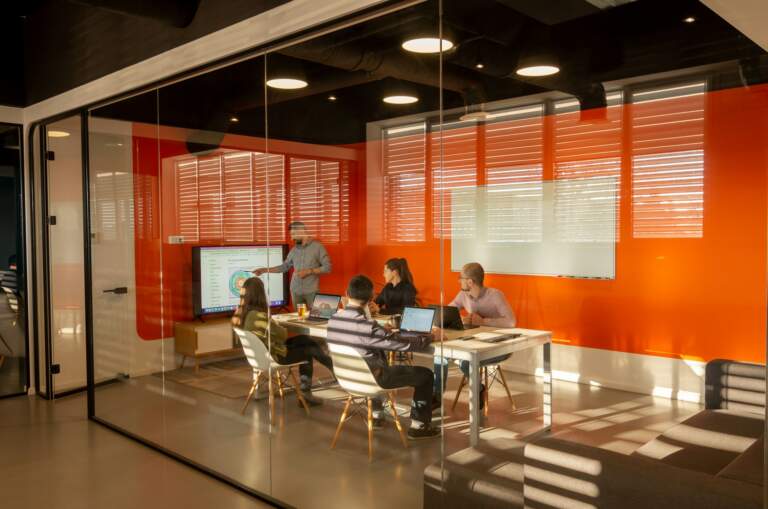The digital arena is transforming rapidly, and the way we create and consume images is at the forefront of this evolution.
With tech advancements in artificial intelligence, particularly generative AI, tools are emerging that allow creators to synthesize unique and visually captivating images unlike anything we’ve seen before.
These breakthroughs are profoundly reshaping the creative industries, from marketing and entertainment to personal artistic endeavors.
This blog dives into how generative AI is revolutionizing image creation, exploring its applications, tools, challenges, and implications for the future of creativity.
Unlocking the Potential of Artificial Creativity
Understanding Generative AI: A Brief Overview
Generative AI refers to a subset of artificial intelligence that creates new content from existing data, whether it’s images, music, or text.
Unlike traditional programming, these systems learn patterns from massive datasets, enabling them to generate visuals that feel almost human-crafted.
At the heart of this innovation are algorithms like Generative Adversarial Networks (GANs) and Diffusion Models.
These systems work by teaching one neural network to generate output while a second network evaluates it, ensuring the final product mirrors the quality of human creation.
How AI Art is Changing the Game
AI art is no longer a concept of science fiction. Artists, advertisers, and companies are leveraging this technology to create mesmerizing, personalized visuals.
Platforms like DALL·E 2 by OpenAI and MidJourney empower users to turn simple text prompts into intricate artwork.
From surreal landscapes to realistic portraits, AI art is democratizing creativity, making high-quality visuals accessible to everyone, regardless of their artistic skills.
Applications Across Industries
Image Synthesis in Marketing and Advertising
Marketers are increasingly using image synthesis to develop custom visuals without breaking the bank on photoshoots or illustrations. Companies can generate tailored imagery for campaigns that align with their brand’s identity and messaging.
For example, an e-commerce store can create product visuals suited to every unique ad placement, significantly enhancing viewer engagement.
Transforming Entertainment
Film studios and game developers are tapping into generative AI to create visual effects, realistic characters, and immersive environments faster than traditional methods.
Tools like Runway AI and NVIDIA Canvas allow professionals to build intricate digital worlds while reducing costs and timelines.
Revolutionizing Education and Research
Within academia, generative AI plays a vital role in training and simulations, producing realistic images and scenarios for learners.
Similarly, in research fields such as medicine, scientists employ image synthesis to develop diagrams or simulate complex biological systems in new and innovative ways.
The Rise of Creative Tools
Accessible Platforms for Everyday Users
Generative AI-powered platforms like Canva’s AI tools and Artbreeder are making image synthesis accessible to non-professionals.
These creative tools empower users with no technical expertise to experiment with design and visual creation. Such technologies foster creativity while expanding who can participate in visual storytelling.
Boosting Productivity for Professionals
For graphic designers and photographers, generative AI acts as a productivity booster.
By automating repetitive or time-intensive tasks such as background removal, image enhancements, or resizing, creators can focus more on conceptual design and innovation.
Challenges and Ethical Considerations
The Controversy of Ownership
Who owns AI-generated art? This question is sparking debates in the creative community.
Since these tools learn from vast datasets, often without explicit permission from the creators of source material, questions about copyright, ownership, and compensation remain unresolved.
Bias in Algorithms
AI models are only as unbiased as the data they’re trained on. Generative AI systems have occasionally produced outputs with biases tied to gender, race, or geography.
Addressing these biases is critical to ensuring inclusivity and fairness in AI-generated content.
Environmental Concerns
Training generative AI systems require significant computational power, raising concerns about their environmental impact. Organizations must strike a balance between leveraging AI and investing in sustainable solutions.
Implications for the Future
Collaboration Instead of Competition
Rather than replacing human creativity, generative AI is expected to augment it. These tools act as collaborators, offering suggestions, streamlining workflows, and opening new realms of imagination for human creators.
Expanding Accessibility
Generative AI is making high-quality design tools accessible to more people. This democratization of art and design might result in an explosion of creativity from underrepresented groups, cultures, and communities.
Shaping the Aesthetic Landscape
Generative AI’s influence may redefine aesthetic expectations across industries, potentially steering visual culture in new directions and creating new art movements in the process.
Harness the Future of Image Creation
Generative AI has moved beyond being just a buzzword—it’s a powerful shift in how we think about creativity, productivity, and storytelling.
Whether transforming industries like marketing and entertainment or leveling the playing field for aspiring creators, its impact cannot be overstated.
For those venturing into this domain, now is the time to explore tools and stay ahead of the curve as generative AI continues to redefine what’s possible in image creation.










